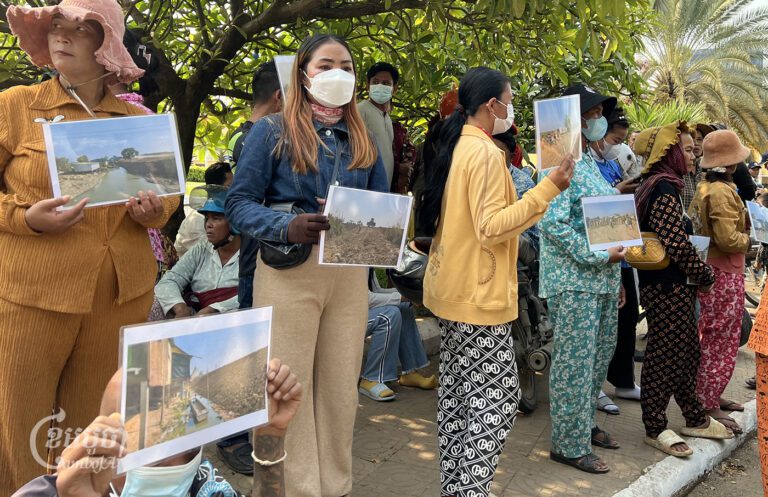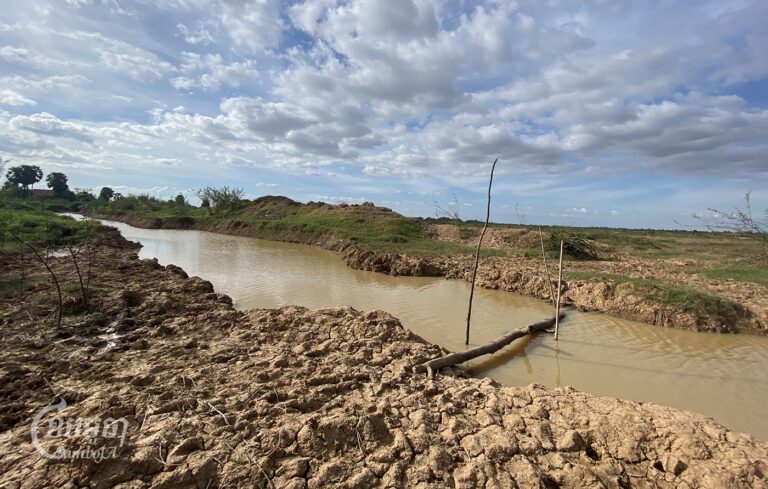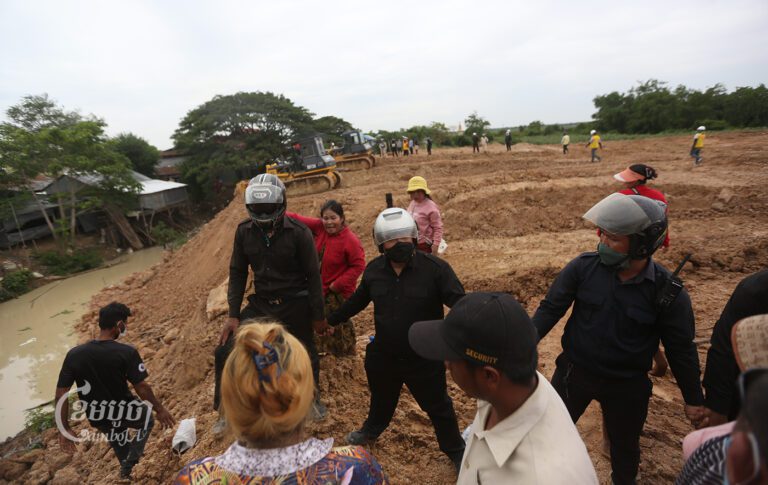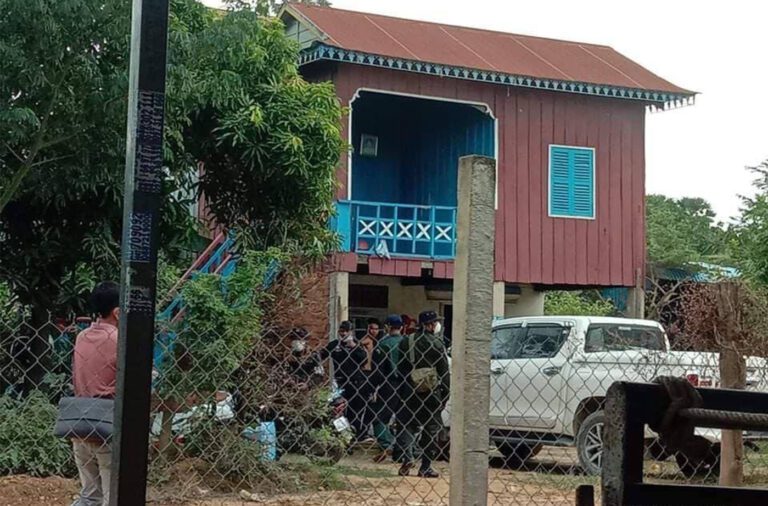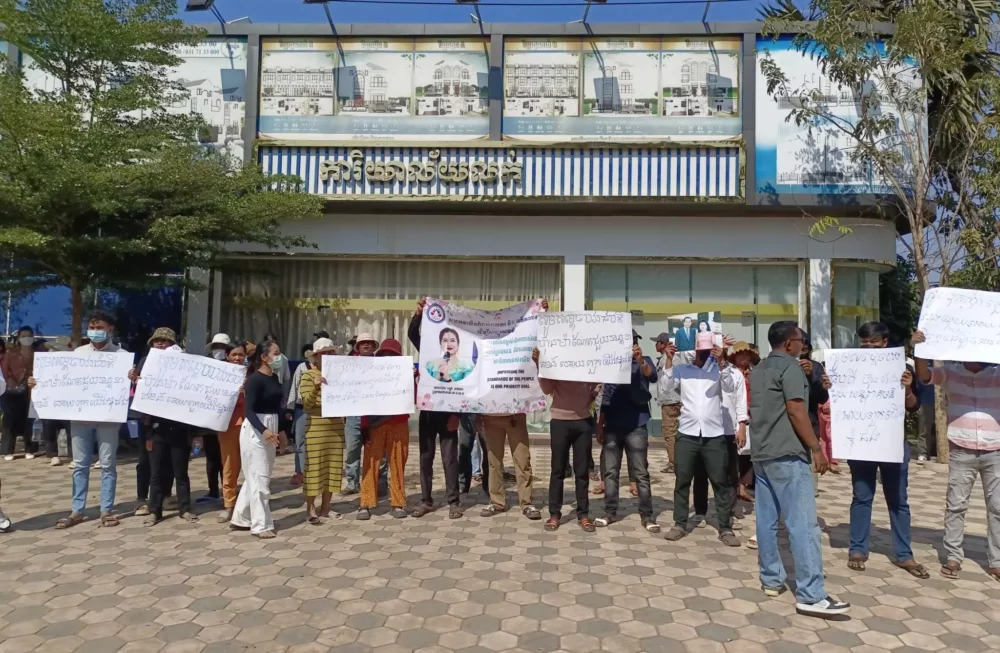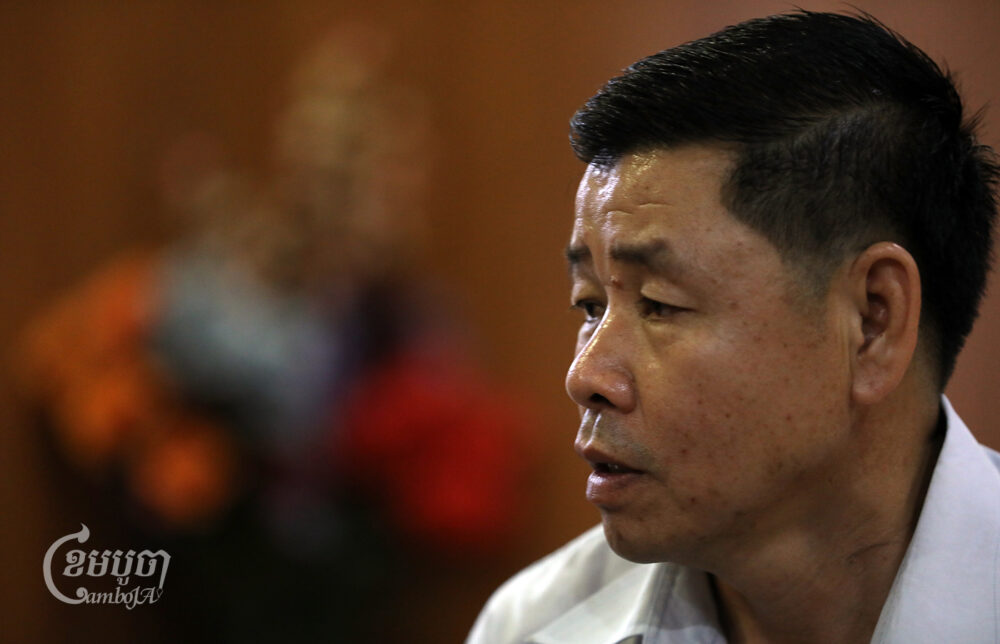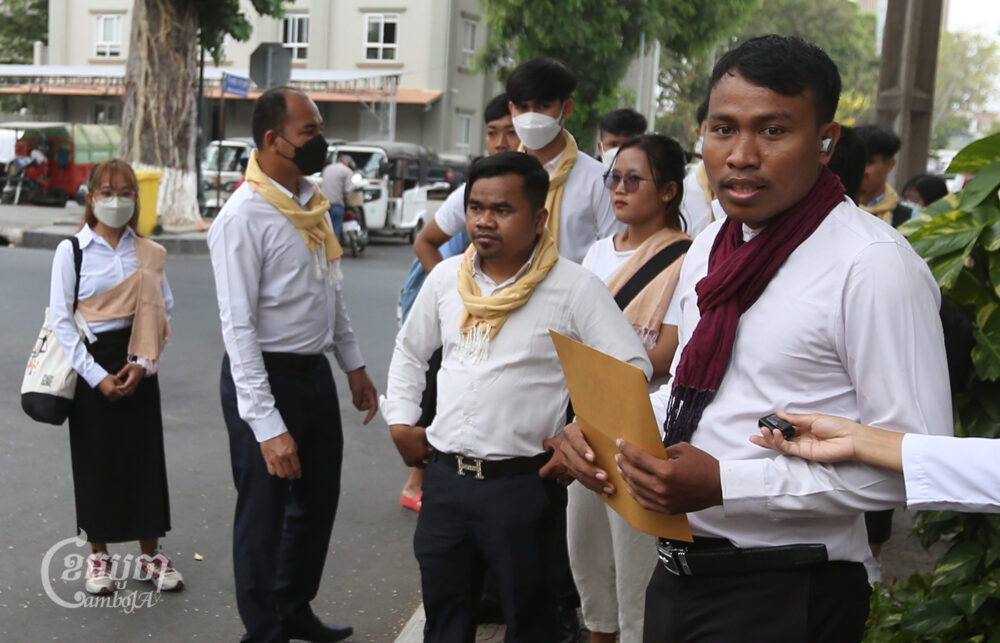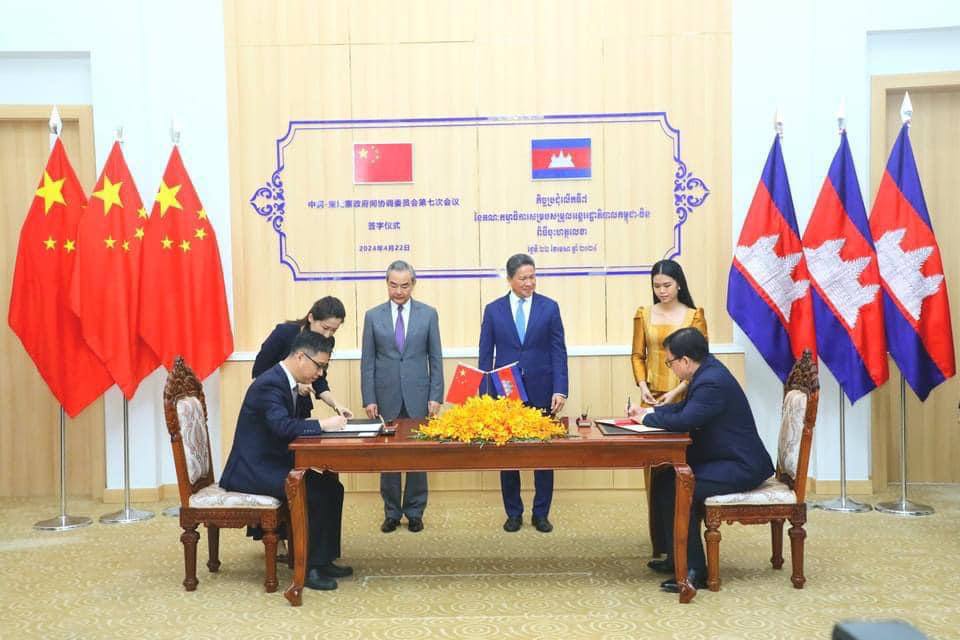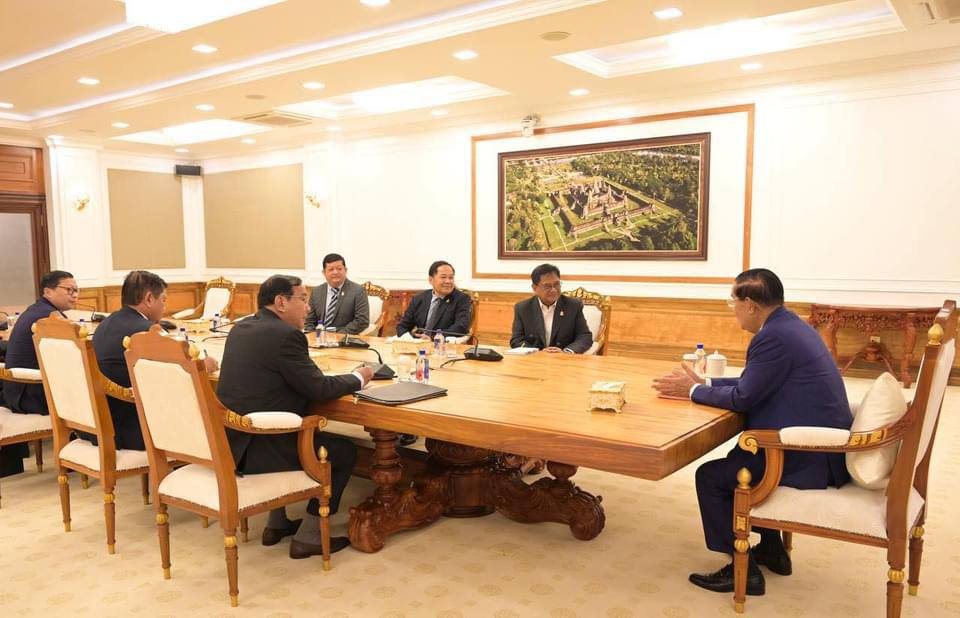Residents living in Arey Ksat have been surprised to learn that a stretch of the Mekong is being filled in to pave the way for a 70-hectare satellite city developed by the Khun Sear Import Export Company, owned by the well-connected real estate tycoon Khun Sear.
Sim Chamreoun, a 49-year-old woman who said that her family had lived along the riverbank for 30 years, said that the community had yet to be notified by authorities.
“We have no idea what is exactly happening here,” she said. “We have yet to receive any order to relocate our homes or be informed about this project. We hope to receive compensation when they ask us to leave — we will not oppose them.”
Another resident, Kroeun Ravid, said that most of the villagers here knew literally nothing about the project.
“We do not know what they are planning to do,” he said. “We do not know how it will affect us personally, or whether we need to relocate. We have been told nothing.”
Seng Pheng, an assistant to Okhna Khun Sear who said that was authorized to talk to the media, told CamboJA that the project was still in its early stages.
“First we need to build an embankment to make a way for the trucks to get into the development site,” he said. “As we have seen, we just poured rocks to make the riverbank, not to fill the river. Once the embankment is completed, the company will start the project right away.”
Pheng said that the company is now collaborating with a foreign expert on designing the project’s master plan. Residents said the filling-in process has been going on for roughly two months.
“Any developments usually create some impact that is inevitable, but the important thing is that we need to look at the bigger picture of development rather than the small impacts,” he said.
He added that the company did not know about the families still living next to the project site, saying that many people who had been living on the future development site had already been given compensation and relocated.
Kandal provincial governor Kong Sophorn told CamboJA that this landfill is part of the city’s wider development, specifically for the purposes of tourism.
“It is the perfect location where we can see the stunning view of the river with the fresh air at the outskirts of the city,” he said. “I think it can serve the tourism purpose well. What is happening here could possibly develop into what has been done at [reclaimed island] Koh Pich and the ongoing development project at Koh Norea. It cannot be more than this.”
The governor stressed that the potential impacts of the development had already been taken into account.
“[We] have a special committee and experts from the relevant authorities working together to find out how the project can affect the local residents and natural resources in the river,” he said. “We are ready to address the various impacts that people face.”
However, Sophorn admitted that authorities had not yet thought about compensation for people affected by the development, saying that it will take time to start the construction project.
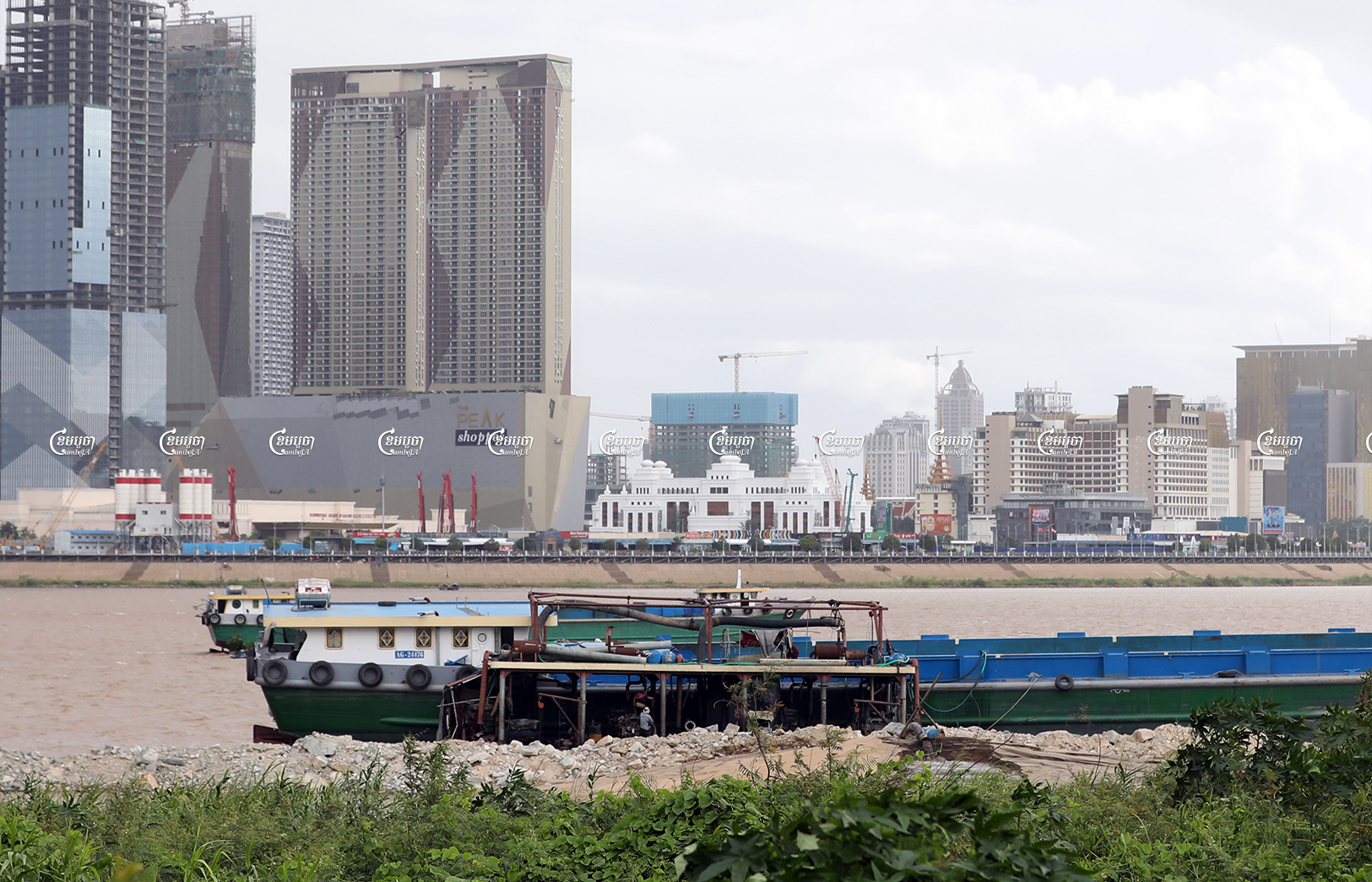
Environment Ministry spokesperson Neth Pheaktra declined to comment on whether an environmental impact assessment had been completed concerning the development, referring reporters instead to the Ministry of Land Management, Urban Planning and Construction and the Ministry of Water Resources and Meteorology. Neither ministry could be reached for comment.
The 70-hectare site is right opposite the Koh Norea satellite city project developed by the Overseas Cambodia Investment Corporation (OCIC) headed by well-connected ruling party member Pung Kheav Se. The satellite city project has also been made possible by filling in the river, covering a space of more than 125 hectares.
OCIC deputy general director Touch Samnang said that the process of filling in the river ahead of the project has been more than 60 percent completed. The $2.5 billion satellite city will be able to house 50,000 residents and will have bridges linking it to both Koh Pich and National Road 1.
“There is no obstacle, even though COVID-19 has slightly affected some work progress as it is difficult to find workers,” he said. “But all infrastructure will be completed in 2023 as planned.”
The stretch of the Mekong near Phnom Penh is critical for fish that migrate during breeding season from the lower Mekong up to the Tonle Sap Lake. These fish feed tens of millions of people, but changes to the river can obstruct their migration pathways.
Ham Oudom, a consultant for natural resource governance on the Mekong River, said that the government and especially the local authorities should provide accurate information publicly concerning the land-filling process.
“Generally, people are not informed enough when there is a new development project until it appears as a completed building,” he said. “So, the government should provide accurate information publicly to avoid criticism.”
He said that as the city is expanding, the government should find vacant land rather than filling in the river.
“We don’t know how much it will impact the natural resources in the river or residents who live nearby,” he said, “Because no specific study has been conducted regarding the above development project.”
Regardless, he said, the land-filling process will definitely affect the river’s biodiversity.



